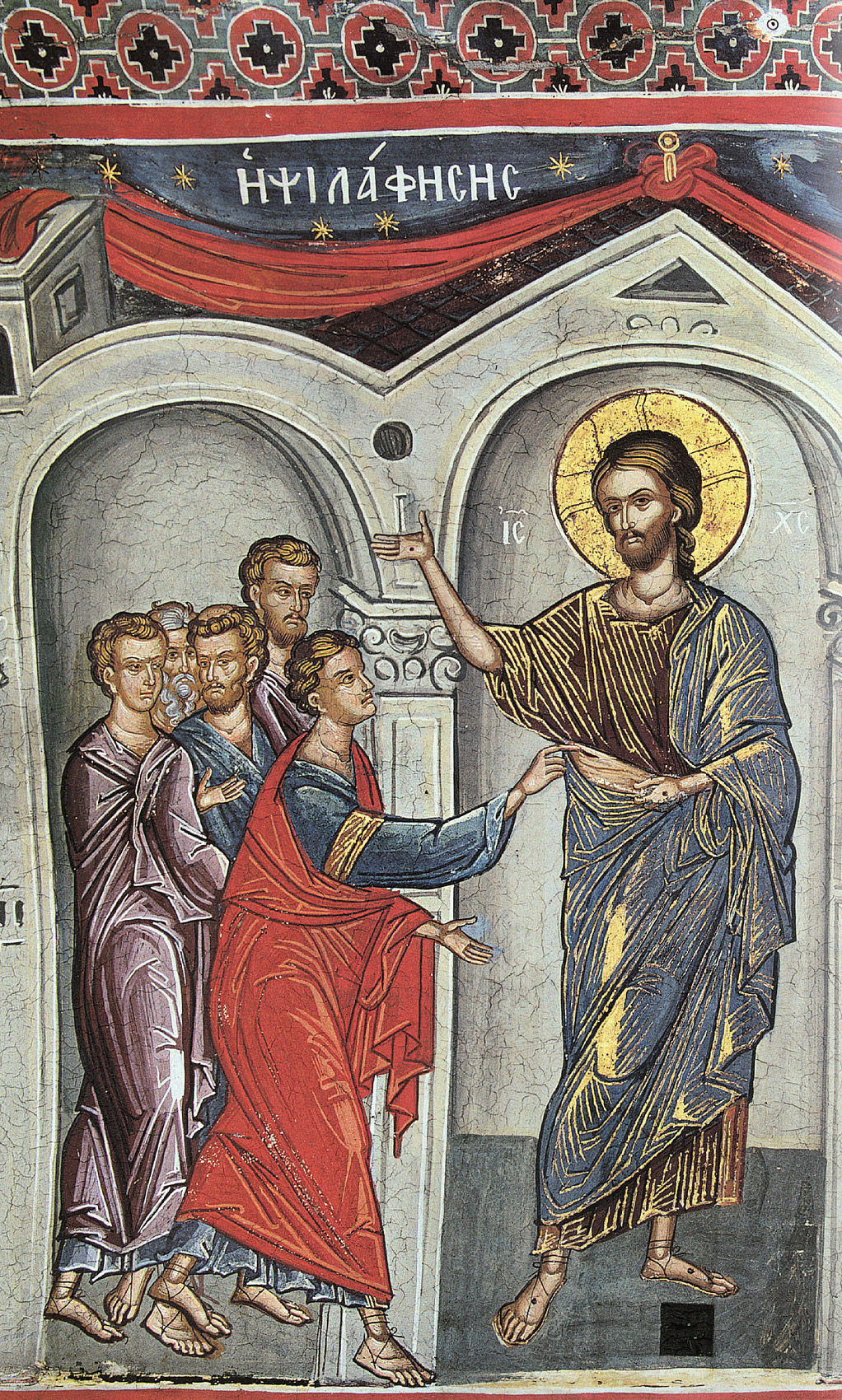Thomas, Apostle of the Twelve
Dates of commemoration
(Church calendar - Apr 10) St. Thomas Sunday (movable feast - 2nd Sunday after Pascha, Antipascha)
Life
The Holy and Glorious Apostle Thomas was born in the Galilean city of Pansada and was a fisherman. Hearing the good tidings of Jesus Christ, he left all and followed after Him. The Apostle Thomas is included in the number of the holy Twelve Apostles of the Savior.
According to Holy Scripture, the holy Apostle Thomas did not believe the reports of the other disciples about the Resurrection of Jesus Christ: “Unless I see in His hands the print of the nails, and put my finger into the print of the nails, and thrust my hand into His side, I will not believe” (John 20:25).
On the eighth day after the Resurrection, the Lord appeared to the Apostle Thomas and showed him His wounds. “My Lord and my God,” the Apostle cried out (John 20:28). “Thomas, being once weaker in faith than the other apostles,” says St John Chrysostom, “toiled through the grace of God more bravely, more zealously and tirelessly than them all, so that he went preaching over nearly all the earth, not fearing to proclaim the Word of God to savage nations.”
Some icons depicting this event are inscribed “The Doubting Thomas.” This is incorrect. In Greek, the inscription reads, “The Touching of Thomas.” In Slavonic, it says, “The Belief of Thomas.” When St Thomas touched the Life-giving side of the Lord, he no longer had any doubts.
According to Church Tradition, the holy Apostle Thomas founded Christian churches in Palestine, Mesopotamia, Parthia, Ethiopia and India. Preaching the Gospel earned him a martyr’s death. For having converted the wife and son of the prefect of the Indian city of Meliapur [Melipur], the holy apostle was locked up in prison, suffered torture, and finally, pierced with five spears, he departed to the Lord. Part of the relics of the holy Apostle Thomas are in India, in Hungary and on Mt. Athos. The name of the Apostle Thomas is associated with the Arabian (or Arapet) Icon of the Mother of God (September 6).
Source:
http://oca.org/saints/lives/2016/10/06/102885-holy-glorious-apostle-thomas
Holy relic type
unless specified otherwise below, "holy relic" means a fragment of a bone of the saint
1. Holy relic
2. Holy relic
Location of the holy relic in the Cathedral:
1. Icon of the Synaxis of the Apostles, east wall of the Cathedral, in front of the north kliros
2. Relics cabinet in the Altar sacristy, reliquary #7 (lower section)
Troparion
Tone 7:
While the tomb was sealed, Thou, O Life, didst shine forth from the grave, O Christ God; and while the doors were shut, Thou didst come unto Thy disciples, O Resurrection of all, renewing through them an upright Spirit in us according to Thy great mercy.
Kontakion
Tone 8:
With his searching right hand, Thomas probed Thy life-giving side, O Christ our God. For when Thou didst enter, the doors being shut, with the rest of the Apostles he cried to Thee: Thou art my Lord and my God.






